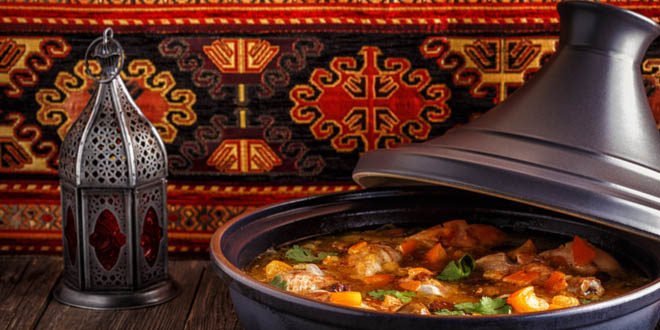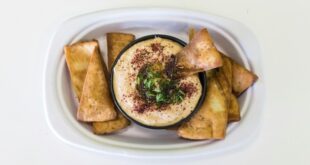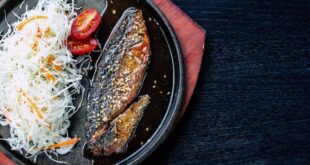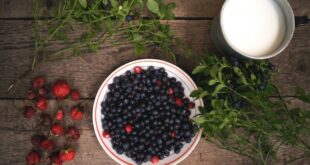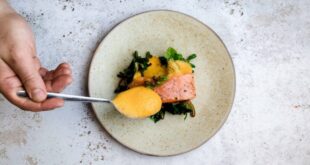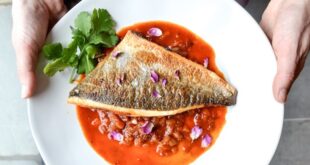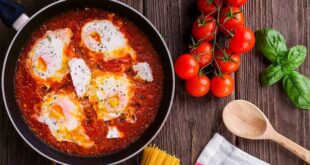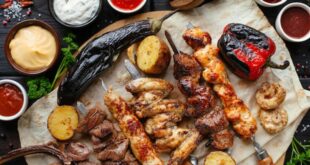Last Updated on November 21, 2023
Few dishes are as striking as Moroccan tajine. Veggies, spices, meats, and other delicious ingredients cooked in one funny plate? Yes, please! There is a wide variety of tajine meals, and no two places will offer the exact same style. However, whether stewed with dried fruit, nuts, preserved lemons, or olives, the meats and vegetables in this African dish are always tender and aromatic.
What is a tajine?
Despite how easily identifiable tajines pretend to be, there are some misconceptions about them. For starters, tajine merely means “covered dish” in modern Moroccan Arabic. So the tajine is both a clay recipient made up of a pot and a conical cover and the name of the stew that’s cooked inside it.
TAKEAWAY: However, tajines aren’t just for cooking. Moroccans use miniature versions as catch-all trays for keys and other small trinkets. They also sometimes use small tajines to serve sugar cubes for tea. So all those cute little dishes street vendors peddle in the old town aren’t actually inauthentic, even if they are too small to roast chicken in.
Buying a tajine
Your casserole may technically qualify as a tajine, but if you find yourself in Morocco wanting to buy the real thing, take note. According to Moroccans, you should be careful not to buy one with glaze on the inside. If the glaze it cheap, it can leach chemicals into the food. Instead, look for ones with exposed clay interiors that will help flavor the food without adding any pesky substances.
Friday tajine
The best day to eat tajine in Morocco is Friday. That is because Friday means one thing in Morocco: couscous. Moroccans have a few explanations for this. One is that, formerly, Friday was the day they had enough time to make this labor-intensive delicacy. The most common reason you will hear though is that, traditionally, Friday is the holiest day of the week. Thus, many Moroccans celebrate this day with their families by preparing and eating couscous together. Restaurants also capitalize on this tradition. Some places only make couscous, regardless of serving style, on Fridays. You may also be able to find a special deal in some cafes.
Most popular tajine dishes
There is no unique “tajine recipe.” They are versatile, and the meal out of them encompasses a wide range of flavors. Some of the most popular dishes are Kefta Mkaouara (or Mkawra), Lhemm Belbarkouk, and Tajine Dajaj.
Kefta Mkaouara includes eggs, tomatoes, and Moroccan meatballs. Lhemm means meat in Arabic; in the context of lhemm belbarkouk, it generally references to beef or lamb stewed with prunes and spices. While those two dishes are popular, the most readily available is tajine dajaj or chicken tajine, in which the chicken is typically cooked with preserved lemons and olives. Warning! Preserved lemons have a very strong taste. If you want eat them at all, nibble.
Khobz bread
Regardless of what tajine you order, it will come with bread. Moroccans have approximately 9,000 types of bread. By far, the most common is “khobz” or “khubz.” The beauty of khobz is that it is perfect for soaking up all the yummy cooking juices that stew in the bottom. Even if the restaurant or host gives you utensils, these are a suggestion at most. Particularly for recipes without couscous, the bread basket is a far more essential tool. Separate the top and bottom of your khobz to help make it more flexible and, thus, easier to manipulate while picking out pieces of chicken, olives, etc. If you’re trying to be health conscious, don’t worry, as every Moroccan will tell you, khobz is a “good bread.” Thanks to the type of wheat it uses and how unprocessed Moroccan bread is, this food is a better choice than one may think.
Communal tajine
Restaurants serve single portions from tajines, but that’s not the standard. If you eat with a host or want to replicate a recipe at home, one shared pot is the norm. Tajine goes in the center of the table so that everyone can reach it. The most authentic way is to eat straight out of the tajine instead of transferring the contents to smaller plates. Therefore, prepare to fight for whatever deliciousness lies underneath the lid!
The variety of dishes served out of tajines reflects the different aspects of Moroccan cuisine as a whole. It can be simple and bright, like tajine daja, or comforting and warm like kefta mkaouara. The best part of tajine though is that it was meant to be shared. That’s why they make some that are so big. So, if you can’t get to Morocco, take your biggest casserole to the spice cabinet and go from there.
 Travel for Food Hub The Food Blog for Travel Lovers
Travel for Food Hub The Food Blog for Travel Lovers

